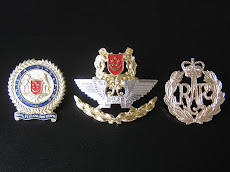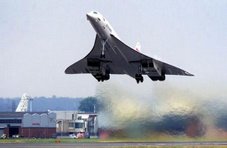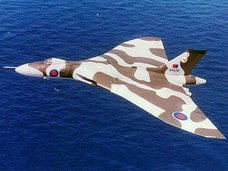Boeing 747 Fun Facts
by Boeing Commercial Airplanes
Parts
- A 747-400 has six million parts, half of which are fasteners.
- A 747-400 has 171 miles (274 km) of wiring and 5 miles (8 km) of tubing.
- A 747-400 consists of 147,000 pounds (66,150 kg) of high-strength aluminum.
- The 747-400 has 16 main landing gear tires and two nose landing gear tires.
- The 747-400 tail height is 63 feet 8 inches (19.4 m), equivalent to a six-story building.
Wings
- The 747-400 wing weighs 95,000 pounds (43,090 kg), more than 30 times the weight of the first Boeing airplane, the 1916 B&W.
- The 747-400 wing measures 5,600 square feet (524.9 m 2 ), an area large enough to hold 45 medium-sized automobiles.
- Four World War I vintage JN4-D "Jenny" airplanes could be lined up on each of the Boeing 747 wings.
- How much weight does an additional 6-foot (1.8-m) wingtip extension and winglet add to the 747-400 wing? None! A weight savings of approximately 5,000 pounds (2,270 kg) was achieved in the wing by using new aluminum alloys, which offset the weight increase of the wing tip extension and winglet
Engineering and Testing
- Seventy-five thousand engineering drawings were used to produce the first 747.
- The first 747 completed more than 15,000 hours of wind-tunnel testing.
- The original 747 flight test program, which led to the airplane's certification for commercial service in December 1969, used five airplanes, lasted 10 months and required more than 1,500 hours of flying.
Flight
- The 747 fleet has logged more than 35 billion statute miles (56 billion km) - enough to make 74,000 trips to the moon and back.
- The 747 fleet has flown 3.5 billion people - the equivalent of more than half of the world's population.
- The 747-400ER range is approximately 7,720 statute miles (14,297 km).
- A 747-400 typically takes off at 180 mph (290 km/h), cruises at 565 mph (910 km/h) and lands at 160 mph (260 km/h).
- For a typical international flight, one 747 operator uses about 5.5 tons (5,000 kg) of food supplies and more than 50,000 in-flight service items.
Engines
- Engine thrust has grown from 43,500 pounds (19,730 kg) per engine on the early 747s to as much as 63,300 pounds (28,710 kg) on the current model.
- The diameter of the 747 engine cowling is 8 feet 6 inches (2.6 m).
Fuel
- The 747-400ER can carry more than 63,500 gallons of fuel (240,370 L), making it possible to fly extremely long routes, such as Los Angeles to Melbourne, Australia.
- A 747-400 that flies 3,500 statute miles (5,630 km) and carries 126,000 pounds (56,700 kg) of fuel will consume an average of five gallons (19 L) per mile.
- The 747-400 carries 3,300 gallons (12,490 L) of fuel in the horizontal (tail) stabilizer, allowing it to fly an additional 350 nautical miles.
Interior
- The award-winning Boeing Signature Interior is available on both the 747-400 and 747-400ER.
- At 31,285 cubic feet (876 cubic meters), the 747-400 has the largest passenger interior volume of any commercial airliner, which is equivalent to more than three houses each measuring 1,500 square feet (135 square meters).
- The 747-400 has a redesigned "flexible" cabin interior that allows airlines to rearrange seats and class configuration overnight (in eight hours). They also permit 48-hour conversion times for changes in galley and lavatory locations.
- Airline cargo handlers use the 747-400's lower-lobe cargo handling system to load or unload more than 65,000 pounds (30,000 kg) of cargo - the equivalent of 625 pieces of luggage combined with 20 tons of revenue freight - in less than 15 minutes.
- The Wright Brothers' first flight at Kitty Hawk, N.C., could have been performed within the 150-foot (45-m) economy section of a 747-400.
- There are 365 lights, gauges and switches in the new-technology 747-400 flight deck, reduced from 971 on earlier 747 models.
SOURCE: Boeing Commercial Airplanes




